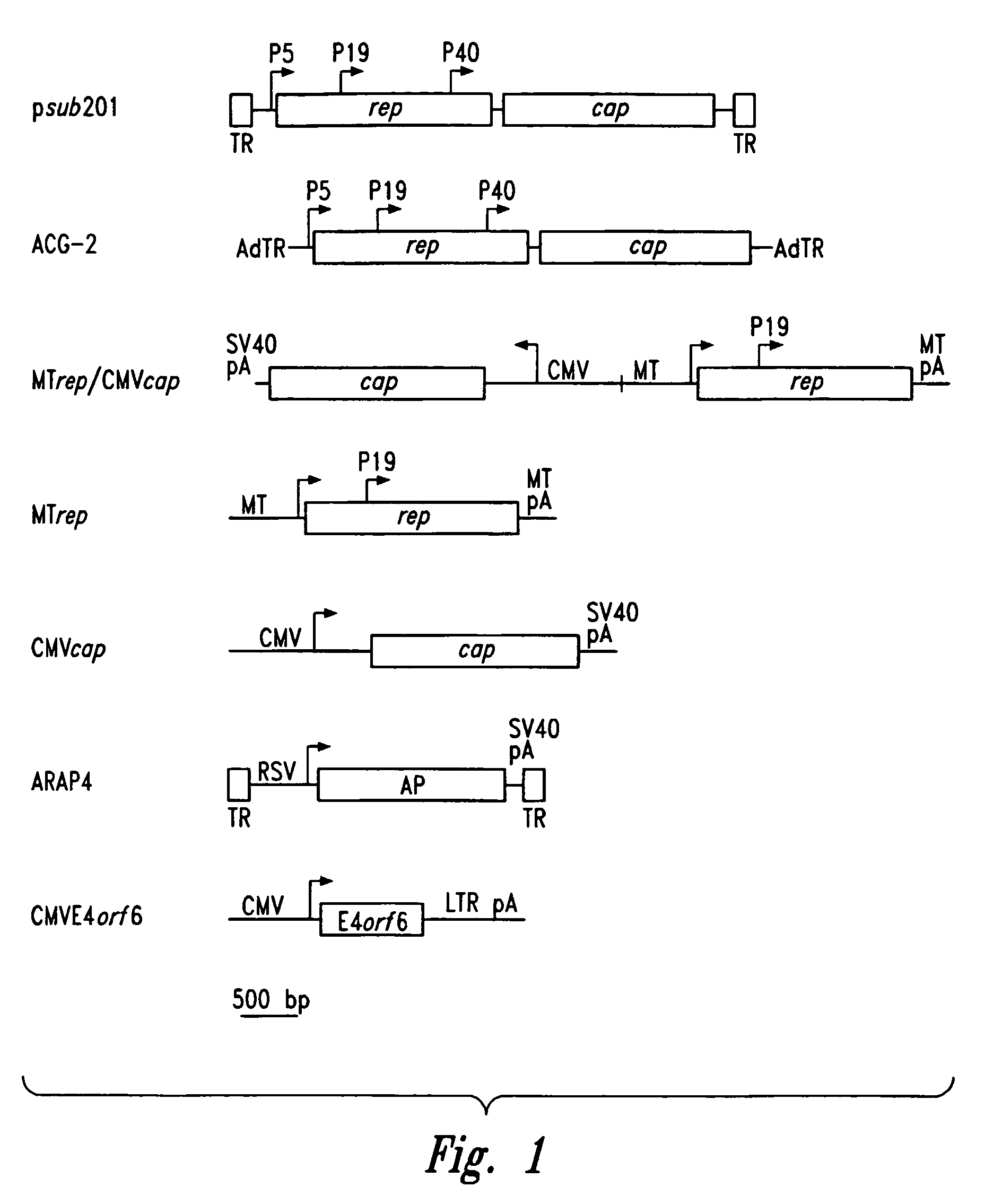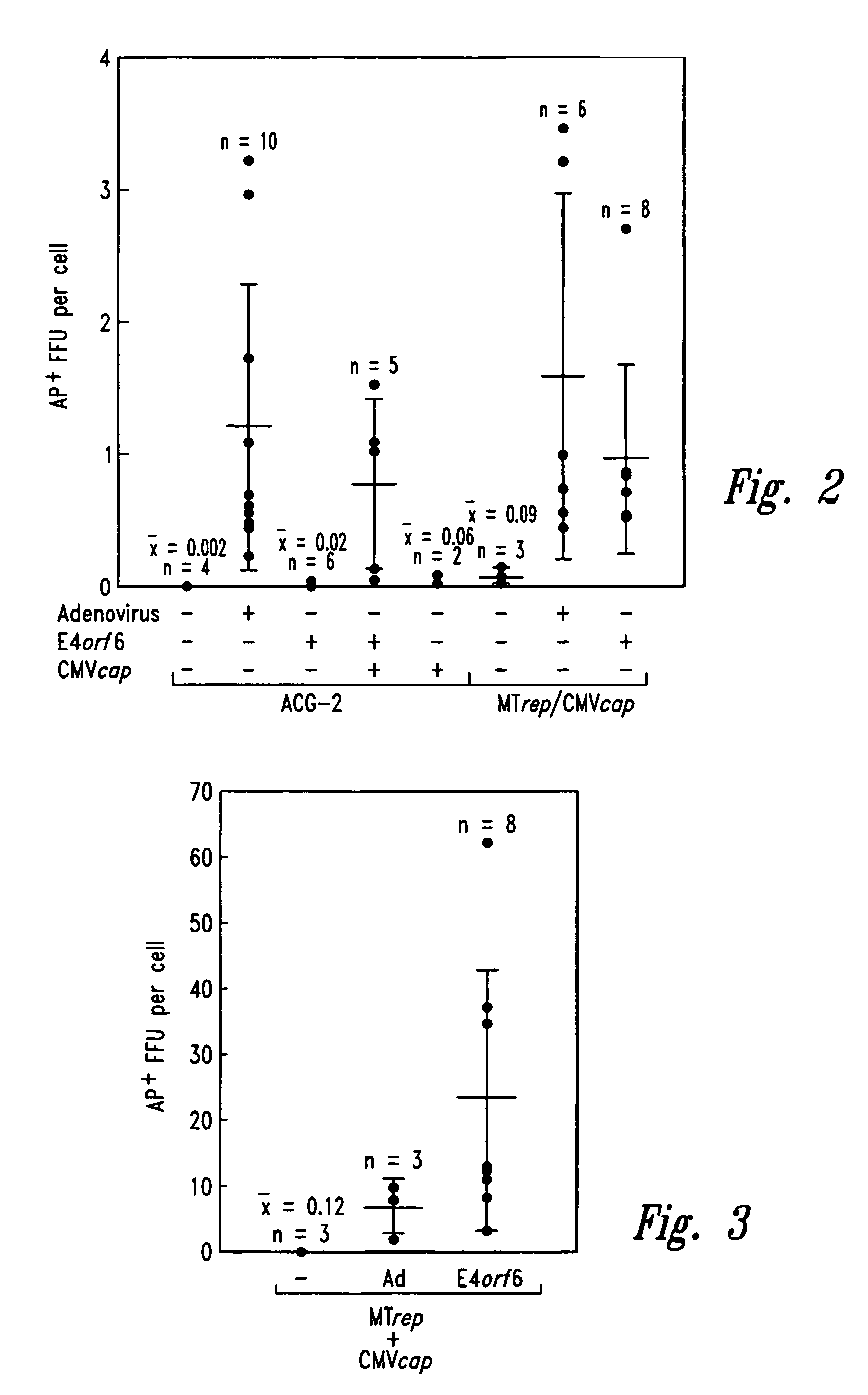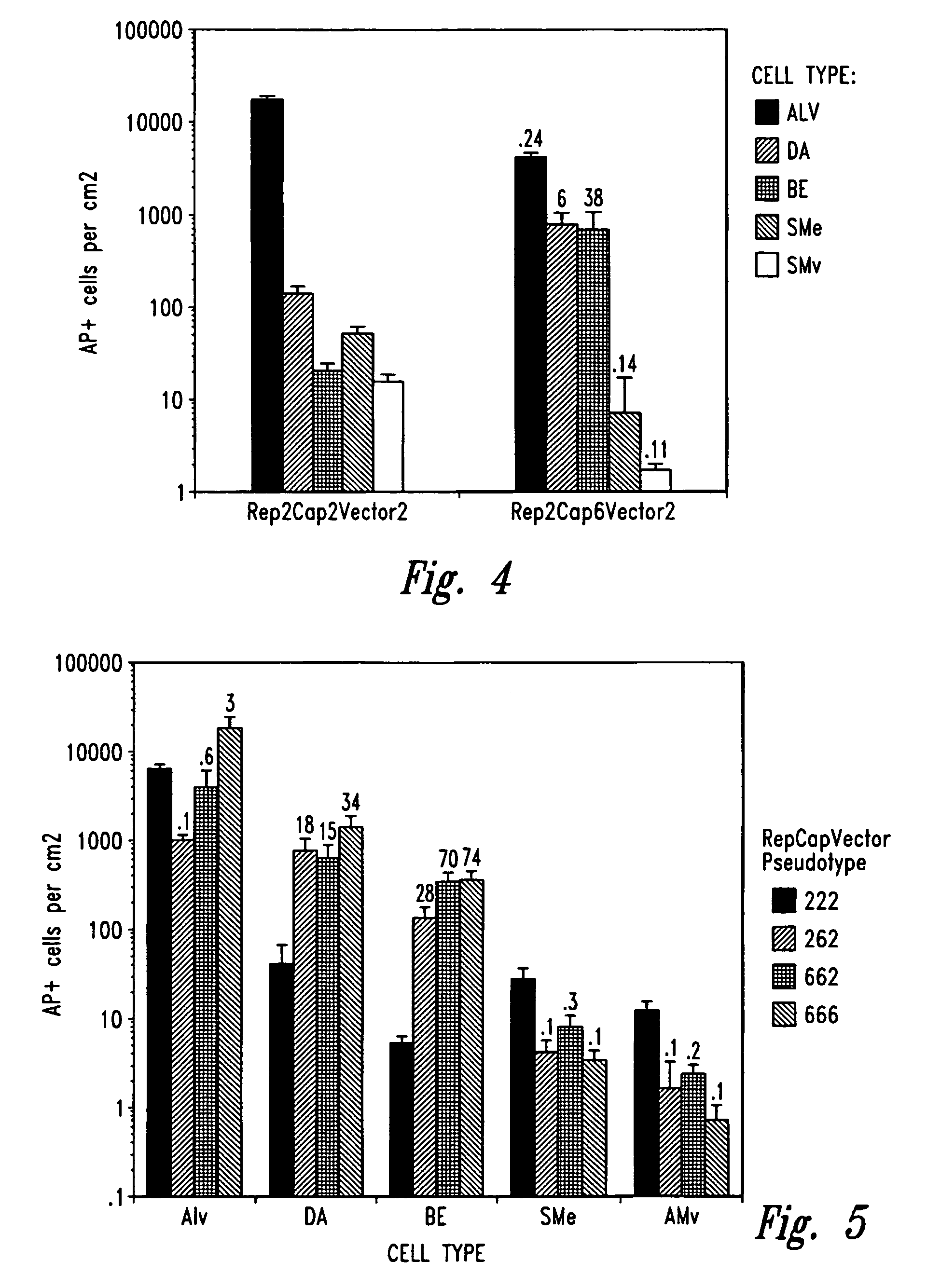Compositions and methods for efficient AAV vector production
- Summary
- Abstract
- Description
- Claims
- Application Information
AI Technical Summary
Benefits of technology
Problems solved by technology
Method used
Image
Examples
examples
Materials and Methods
[0076]Cell Culture. 293 (Graham et al., J. Virol. 36:59–74 (1977), incorporated herein by reference); IB3 (Zeitlin et al., Am. J. Respir. Cell Mol. Biol. 4:313–319 (1991), incorporated herein by reference), and HT-1080 (American Type Culture Collection (ATCC) CCL 121) were maintained in Dulbecco's modified Eagle medium supplemented with 10% heat-inactivated (30 min at 56° C.) fetal bovine serum, 100 U of penicillin per ml, and 100 μg streptomycin per ml at 37° C. in a 5% CO2-air atmosphere.
[0077]Plasmid Construction. The pSub201 (Samulski et al., J. Virol. 61:3096–3101 (1987), incorporated herein by reference), ACG-2 (Li et al., J. Virol. 71:5236–5243 (1997), incorporated herein by reference), and MTrep / CMVcap (Allen et al., J. Virol. 71:6816–6822 (1997), incorporated herein by reference) plasmids have been previously described and contain AAV2-derived gene components. The CMVE4orf6 sequence was isolated on a BamHI / ApaLI fragment from pLNCX-ORF6 (Scaria et al., ...
PUM
| Property | Measurement | Unit |
|---|---|---|
| Efficiency | aaaaa | aaaaa |
Abstract
Description
Claims
Application Information
 Login to View More
Login to View More - R&D
- Intellectual Property
- Life Sciences
- Materials
- Tech Scout
- Unparalleled Data Quality
- Higher Quality Content
- 60% Fewer Hallucinations
Browse by: Latest US Patents, China's latest patents, Technical Efficacy Thesaurus, Application Domain, Technology Topic, Popular Technical Reports.
© 2025 PatSnap. All rights reserved.Legal|Privacy policy|Modern Slavery Act Transparency Statement|Sitemap|About US| Contact US: help@patsnap.com



